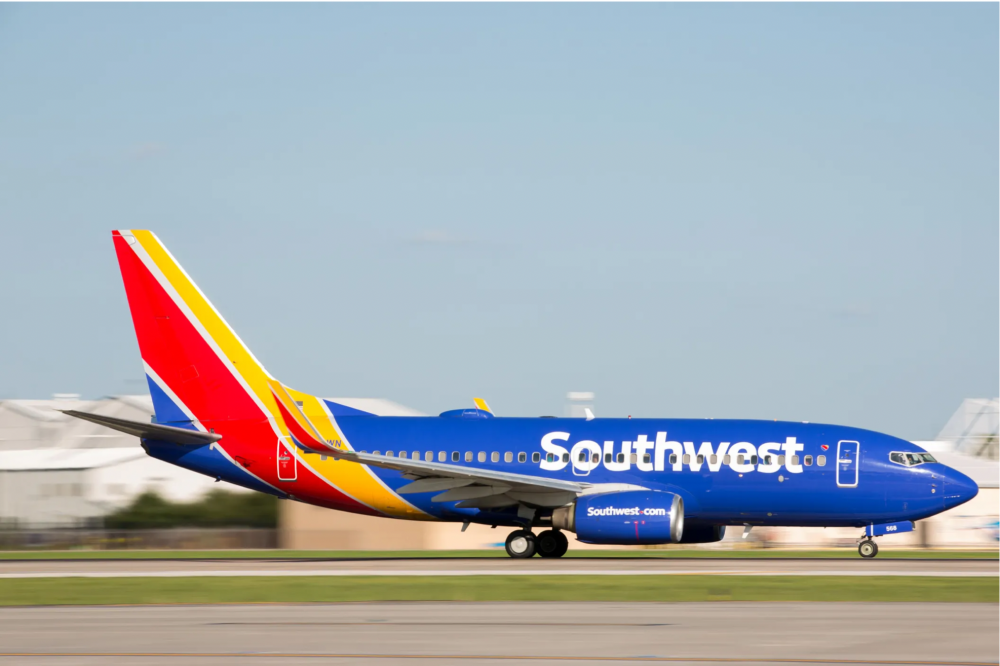
FELIX ZHANG – APRIL 24TH, 2024
EDITOR: LARA RAMIREZ
A ninety-dollar ticket from San Francisco to Cabo sounds like the perfect affordable getaway, but now there is a never-ending line of extra charges. Picking a seat? Fifteen dollars. Paying for bags? Add another thirty. And that water onboard? That will be an extra five. Despite all the additional purchases on top of the original price, the low fare price is still well below that of the legacy airlines offering the same route.
Flying on low-cost airlines can be frustrating, with long delays and exorbitant extra fees; yet, they have been growing at a tremendous pace. What makes low-cost carriers so successful, and how have they impacted the airline industry?
The Growth and Economics of Low-Cost Airlines
The airline industry has never been as large as it is today, with the market estimated to record a revenue of $964 billion in 2024. This is in part due to the rise of low-cost airlines, which have made flying far more accessible to customers around the world. In 2019, there were 4.49 billion flights taken, a vast increase from the 1.77 billion that occurred at the turn of the millennium just nineteen years prior. The airline industry was not always so robust: originally, air travel was largely controlled by governments across the world, which either ran or heavily regulated airlines now referred to as “legacies,” due to their history and age.
The first major airline that began adopting the low-cost business model was Southwest Airlines. Southwest was largely born out of the U.S. 1978 Airlines Deregulation Act, which granted the private sector access into the American flight market that was previously exclusively controlled by the government. Southwest Airlines largely differed from its competitors in how it ran its business. Instead of catering to business travelers who generally departed out of central airports that charged expensive fees, Southwest Airlines pivoted their business model towards leisure travelers, while flying out of cheaper airports that were sometimes further away from the city. Its planes also did not feature first class; it instead opted only to offer different economy fare types. In addition to structuring fares to target more budget-conscious travelers, Southwest was also able to save money by establishing a fleet with only one type of plane – the Boeing 737. This strategy enabled Southwest to provide cheaper fares, as having just one plane model helped reduce the cost of operations in a quasi-economies-of-scale sense: it was far more efficient for Southwest to have all their pilots, cabin crew, and mechanics trained on just the 737. This also allowed the airline to make better deals with Boeing as a loyal, bulk-order customer.
While Southwest’s approach is far different than the traditional U.S. airlines, there are certain aspects of its business model that distinguish it from many newer, low-cost airlines. Southwest has a policy of allowing two free checked bags, which is extremely rare for any airline in the modern era, much less a low-cost airline. Furthermore, Southwest continues to invest in other facets of their business, such as customer service and brand loyalty, which are not necessarily reflected in other low-cost carriers.
Starting from the 1990s and 2000s, the low-cost airline industry has experienced booming growth in Europe, the U.S., and Asia, as other countries have deregulated their airline markets. The rise in low-cost carriers parallels the increasing prominence of a growingly wealthy, but still budget-conscious, global middle class that has a greater appetite for travel than ever. For these consumers, quality of service is not a key priority, while price and convenience are the most important factors. In Europe, the growth of low-cost carriers is exemplified by the rise of Easyjet and Ryanair. In 2024, Ryanair became the most valuable airline in the world, boasting an impressive market capitalization of $31.63B, well ahead of second place Delta Airlines, with the aforementioned Southwest in third place. In the Asia Pacific market, the establishment of cheap airlines came through AirAsia and Lion Air, in addition to opportunistic legacy airlines like Australia’s Qantas, or Singapore Airlines, launching their respective low-cost subsidiaries JetStar and Scoot.
While budget airlines have increased travel opportunities for new customers, they have not been without controversy in how they run their businesses. As part of their business model, low-cost airlines barely break even on the ticket price, meaning that ancillary charges, upcharges outside of the base fare, constitute a large portion of their revenue. The vast majority of these airlines resort to various extra fees, ranging from the reasonable to the ridiculous. Commonly, low-cost airlines charge significant fees for seat selection, baggage, and onboard food and drink. However, airlines such as Ryanair have gone to even further measures to raise these non-ticket revenues. The Irish-based airline has been known to charge up to 60 euros for printing a ticket at the airport as a way to generate extra profit and cut down on employment costs. Even during staff strikes, the airline has been unwilling to compensate passengers for canceled flights or changed plans, leading to various lawsuits. In 2019, out of Ryanair’s total revenue of €7.6 billion, €2.4 billion, or 32% of total revenues, came from ancillary charges, compared to an industry average of 18%.
Ryanair has also been called out for mislabeling the airports that they fly to. For many of the major cities that Ryanair flies to, such as Milan, Dusseldorf, and Paris, Ryanair does not travel to the larger, more central airport, but instead chooses to fly to neighboring airports where landing fees are significantly cheaper. While this method helps to drive down costs, the airline has been criticized for advertising flights to low-amenity airports that can be up to two hours outside of the center of the city. While Ryanair consistently ranks among the lowest in customer satisfaction among airlines across the world, their continued growth and success proves that customers are still willing to use their service for the low costs, despite the potential frustrations and challenges that come along with it.
The Future of the Airline Industry
The rise of low-cost airlines across the world has caused a significant shake-up in the industry, forcing traditional airlines to adapt their business strategies. One way that legacy airlines have attempted to combat the rise of low-cost carriers is to reduce their own costs, while offering a more varied fare structure. Offering basic or reduced economy classes helps airlines lower their costs by providing reduced services and amenities to certain customers while enabling them to capture the most cost-conscious sector of the market. This form is similar to third-degree price discrimination, where airlines are able to target their prices toward certain groups of consumers. As observed in Asia, many traditional carriers have also entered the low-cost market by establishing their own low-cost subsidiaries, while other airlines have created partnerships with low-cost carriers.
low-cost airlines have become so successful because of the simplicity of their business models. With low fares and few amenities, these airlines remain focused on getting the most individuals from A to B in the quickest time and cheapest fashion possible. Their lower operational costs and higher ancillary revenues compared to traditional airlines has enabled them to grow rapidly and earn greater profit margins. However, while traditional airlines have lost their oligopoly over the airline industry, they still have a place within the future of the market. There will still always be a demand for long-haul flights, such as trans-Atlantic and trans-Pacific trips, where the low-cost business model has not demonstrated as much success. Furthermore, the ability of traditional airlines to cater to wealthier and business-oriented travelers will enable them to retain a more loyal customer base. Meanwhile, low-cost airlines provide the ability to travel to a much larger sector of consumers, creating access to flight for individuals that previously would not have been able to travel by plane. low-cost airlines will face the potential challenges of an oversaturated market and must reckon with the environmental impacts of air travel; but it appears like the future of flying is more affordable and frequent for the world.
Featured Image Source: CN Traveler
Disclaimer: The views published in this journal are those of the individual authors or speakers and do not necessarily reflect the position or policy of Berkeley Economic Review staff, the Undergraduate Economics Association, the UC Berkeley Economics Department and faculty, or the University of California, Berkeley in general.



